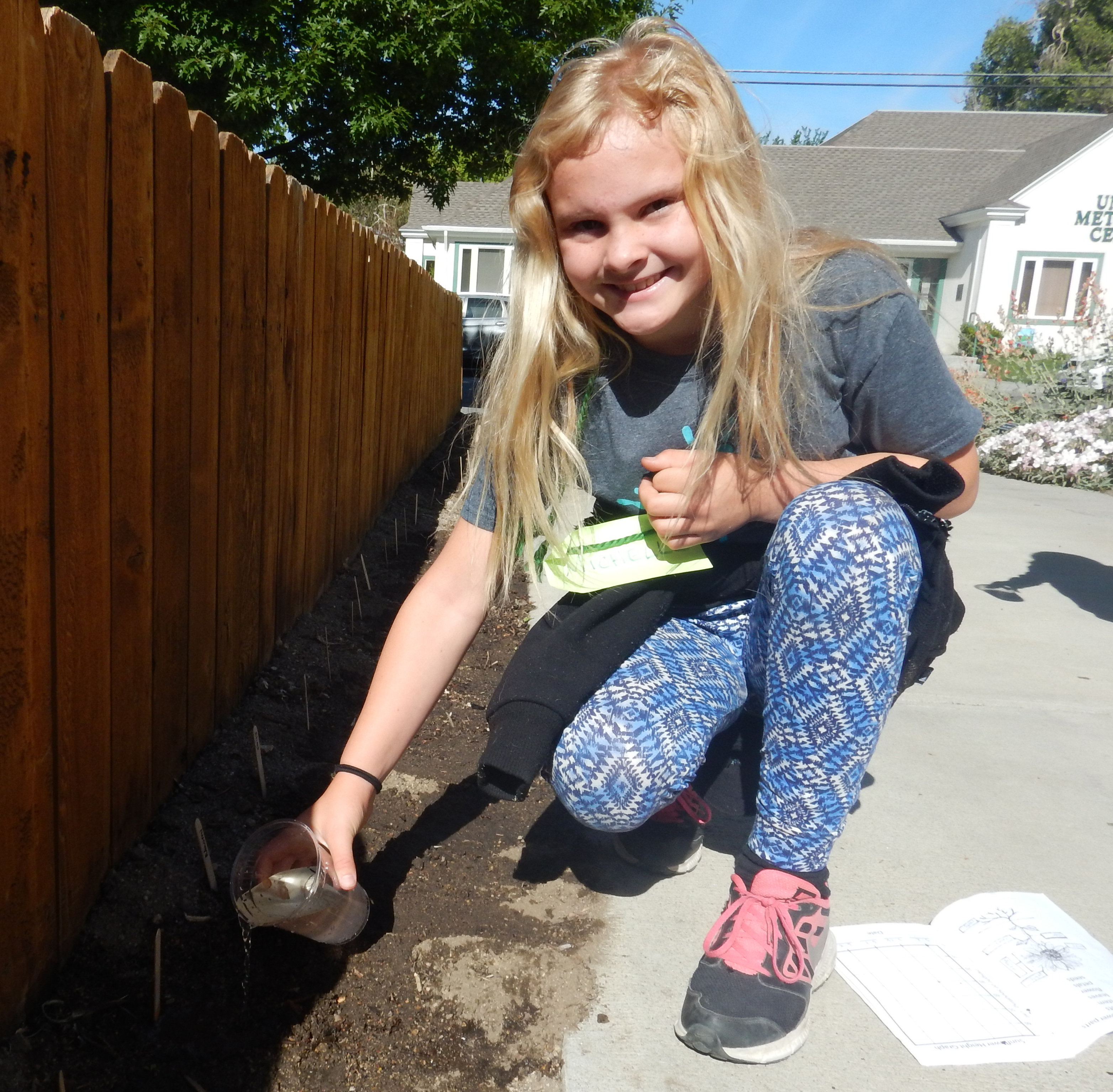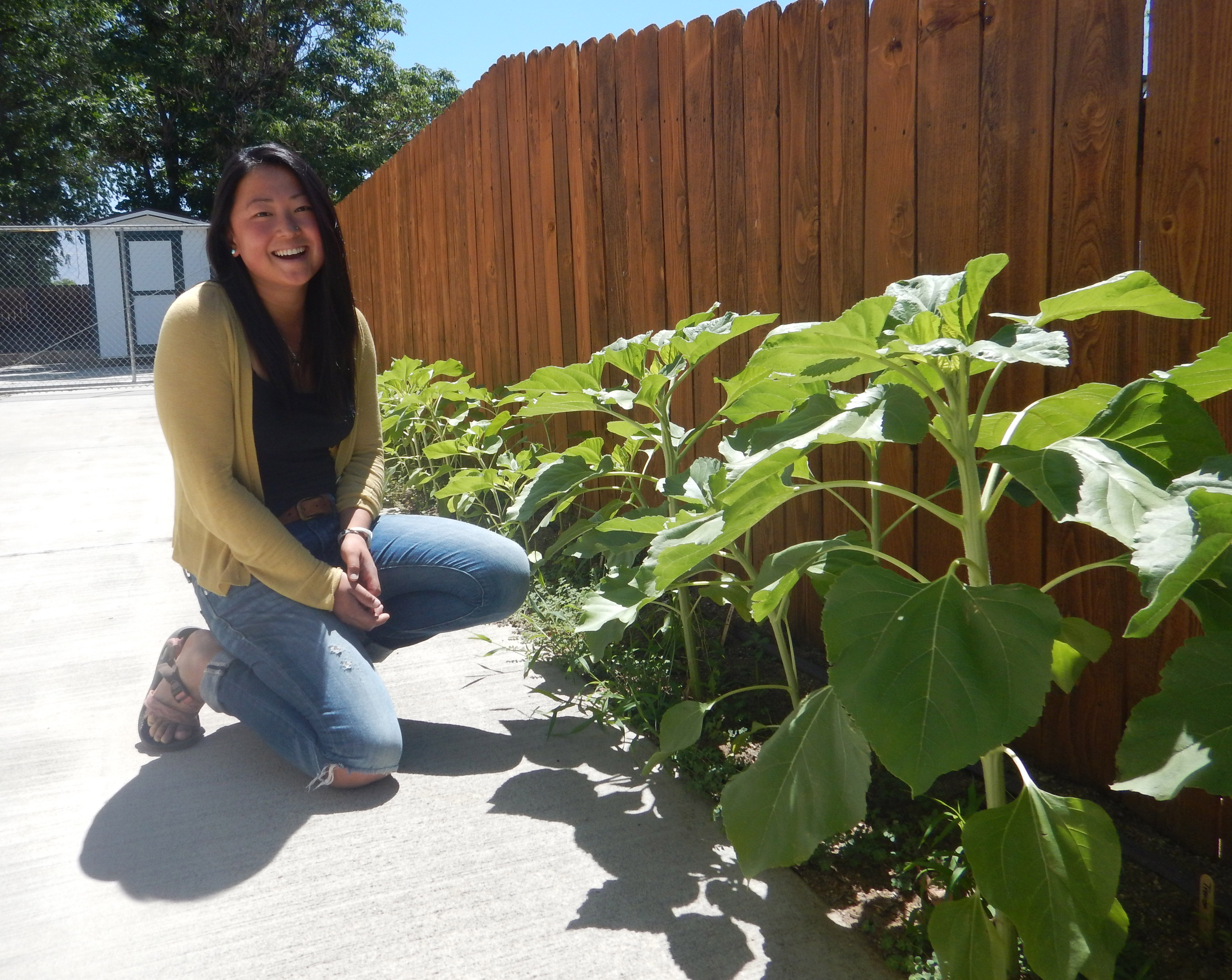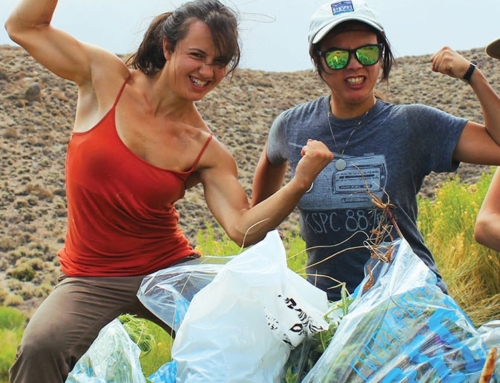On manymornings inApril, May, and June, the excited voices of Bishop Elementary School thirdgraders couldbe heard around the block as they rounded the corner, enroute to Eastern Sierra Land Trust’s Native Plant and Pollinator Demonstration Garden.
When they reached their destination, they’d rush over to astrip ofdirt they’ve been tending all spring. Each kid would excitedly scanthe row of popsicle sticks to find his or hername, and subsequently, their sunflower sprout – growing taller every day.
A number ofstudentsspent five weeks this spring visiting the ESLT garden regularly as part ofESLT’s Sunflower Garden Project. Kidsfrom three different 3rdgrade classes nurtured and tracked the growth of their sunflowers, all while learning about pollinators and the Earth’s natural cycles through educational games and activities.
During thethe last week of school, we wrapped up the Sunflower Garden Project for the year with a “Garden Party” for each class. Students painted flower pots, snacked on almond butter and apples, and played jeopardy – answering questions like, “what do butterflies use to harvest nectar?”It put a smile on my face to hear achorus of young voicesshout, “Proboscis!”
With almond butter smeared on their chins and fingers sticky with paint, the kids would proudly show offtheworks of art they painted ontheir flower pots. Some were decorated in mountain scenery, while others displayed images offavorite flowers from their gardens at home.
The Bishop Elementary School studentsweren’t the only kidsto experience hands-on learning about pollinators this spring. Callie Peakes, leader of the 4-H Sunflowers, also reached out to ESLTto ask if I could work with her kids for a session. I played a fun game with themcalled the “Munching Mouth Parts,” in which the kids acted out the different ways in whichbees, butterflies, flies, and ladybugs collect nectar.
I also worked with Emily Underkoffler to teachMammoth Elementary School’s two 2ndgrade classes all aboutpollinators. During the presentation, the kidsteemed with enthusiasm fornative bees, and all enjoyed participating in pollinator-themed games and activities. I was blown away by their thoughtful questions, such as: “what if we made a place for the native bees to be and brought them there?” As a language immersion class, they were even teaching me bee-related Spanish vocabulary! Abejas, colmena, flor‚Ķ

Seen here in ESLT’s backyard, kids in Victoria Hamilton’s 3rd grade Class proudly show off their painted flower pots at their Garden Party.
As the saying goes, “It takes a village‚Ķ” and in this case, it takes a village to save our native pollinators. We’re thankful that educatorslike Callie and Emily havereached out to us for helpincorporating pollinator education into their busy curriculums.
Passing the knowledge of pollinators on to the nextgeneration is vitally important, because it’s bees, butterflies, and other pollinators like these that keep the Eastern Sierra blooming. From wildflowers to working farms, our region’s beauty and productivity relies on pollinators – and it’s everyone’s responsibility to do what we can to keep them healthy.
Watching the glow of enthusiasm grow everbrighter in these kids’ eyes hasgiven renewed hope to our effortstokeep our Eastern Sierra lands bloomingand beautiful for generations to come.










Very impressive. Touching these minds will give our native pollinators a better chance.
Thank you for your kind words and support, Lillie! We hope to continue these programs for years to come.
[…] gardens across the Eastern Sierra, and will be responsible for organizing youth and adult environmental education programs, field trips, seminars, workshops, and volunteer-driven stewardship events on the […]
[…] Working with kids from three separate Bishop Elementary School 3rd grade classes during ESLT’s annual 7-week outdoor education program, the Sunflower Garden Project. I taught them games about plants, pollinators, and the natural world – read more by clicking here! […]